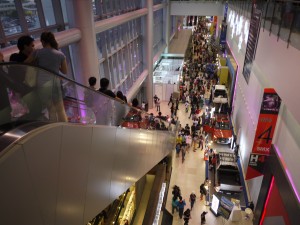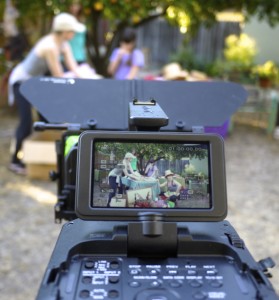 The Peril of 4K: Be Careful What You Wish For
The Peril of 4K: Be Careful What You Wish For
Higher and higher resolution. It’s what we all want, right? And the camera makers responded. NAB and Broadcast Asia 2014 were awash with 4K, and IBC will soon experience the same fate. Larger sensors and ever higher pixel counts are the rage so bring it on baby. More resolution is better, right?
Well, maybe not. The same super high resolution that lends the professional look and feel to our images has an unexpected downside. We shooters as masters of our craft have learned to compose with skill and taste, by excluding everything that detracts from the visual story.
The advent of 4K, 5K, and higher resolution has introduced an era of boundless post-camera hanky-panky, including most disturbingly the willy-nilly indelicate cropping of our well-considered images. In this new brave digital world shooters have grown accustomed of course to seeing our work tweaked ad infinitum downstream. Many scenes, say, shot on green screen, must be composited, or an image must be stabilized, or a guide wire removed. We shooters accept this reality of working in a modern all-digital world.
Problem is, owing to the arrival of 4K and heaven forbid 8K later this decade our images are being transformed and systematically trashed in a way we’ve never experienced. The shenanigans we are seeing, the re-framing and re-cropping of our work by less talented others, will only become more common as the pixel count rises. Alas giving producers, editors, and indecisive directors, so much resolution invites foul play. And that is exactly what we are increasingly experiencing.
So sure we love 4K, and more and more we are willing to put up with its challenges: the massive data loads, the high compression in-camera, the bevy of high-frequency artifacts and chromatic aberrations appearing suddenly in our re-purposed SLR lenses. Of course we love 4K. Fine. Let’s also consider the unintended consequences and the impact on our craft.
Higher and higher resolution. Is it what we really want? Think about it.
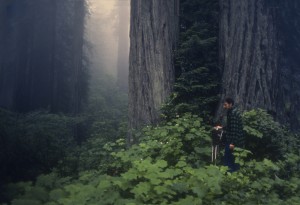
4K is growing up around us. How much resolution is enough for your stories? How much is desirable?
 A Flicker of Truth
A Flicker of Truth
Whether you’re shooting time-lapse, fast or slow motion, or even more routine scenes under temperamental fluorescent lighting, chances are you’ve confronted flicker and have thrown up your French flag in frustration. Today the flicker menace seems even greater owing to most cameras’ tiny viewfinders that make it difficult to spot on location, increased use of LEDs and other discharge lighting, and greater availability of cameras capable of shooting at off frame rates.
Flicker may be seen as a faint background pulsating effect, or more dramatically as a significant fluctuation in exposure from frame to frame. In most cases the flicker may be reduced or eliminated through use of the ClearScan or Synchroscan shutter found in newer video and hybrid cameras like the Panasonic GH4. Fine shutter tweaking should always be your first course of action. Shooting 24p in 50Hz countries? Set the camera shutter (in degrees) to 172.8º. Shooting 30p in 50Hz countries? Set the camera shutter to 108º, 216º, or 324º. The use of a camera’s fine shutter is imperative if one is to avoid flicker stemming from the field frequency mismatch when shooting abroad.
Nevertheless regardless of our best efforts the specter of objectionable flicker will occasionally raise its ugly head, and this is where Digital Anarchy’s Flicker Free plug-in can save your backside. Compatible with Final Cut Pro 7 & X, Avid, Adobe Premiere, and Adobe After Effects, the plug-in can be especially effective for eliminating flicker in time-lapse and slow-motion footage, and in certain scenes illuminated by HMIs, fluorescents, and LEDs.
The Flicker Free software is simple to use with presets for time lapse, slow motion, computer/TV screen, and archival film restoration. This level of simplicity is possible because the flicker cadence in most cases is a regular pattern. In case of need further tweaking of the underlying parameters is still possible from within the plug-in.
Flicker Free’s THRESHHOLD setting specifies how much change in brightness is tolerated from frame to frame. While significant changes in brightness from frame to frame are usually deliberate, this is not the case when shooting neon or in an out of sync 50Hz/60Hz environment. In such scenes exhibiting a brightness fluctuation in excess of 20 percent from frame to frame Flicker Free is not likely to offer much help.
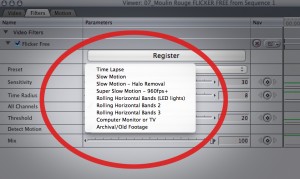
Digital Anarchy’s Flicker Free plug-in is supported in most major editing platforms. It will work either very well. Or not at all.
 Nothing Digital About This
Nothing Digital About This
Some of you may be aware that I have a vague and passing interest in vintage English bicycles manufactured from 1935 to 1950. Respected makers like Raleigh, Rudge, Humber, and Sunbeam, ruled the roost during this era of petrol rationing prior to and for several years after World War II. These bicycles were not generally well chromed or even particularly well finished. They were not works of art to be admired on a wall in a museum but were in fact heavy utilitarian beasts to be used daily in all kinds of weather for the purpose of simple transportation. This morning in London many of these humble machines from decades ago once more saw the light of day for the annual London Tweed Run. I can report that I was present and orgasmic for the entire 3.75 hours of this blessed event.

The Tweed Run London 17 May 2014

Guarding His Dad’s 1930s Era Tandem

The Tweed Run accommodated rider of all ages and species.
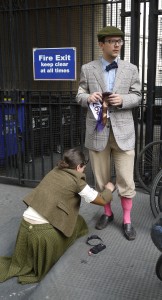
The Tweed Run attracted many couples.
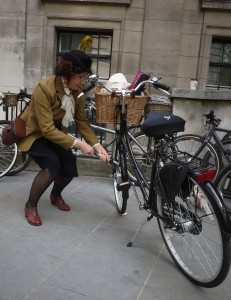
The required attire did not seem particularly conducive to performing basic bicycle maintenance.

Getting married in 1930s Britain? For most couples this meant purchasing a tandem and hitting the road.

It’s difficult to imagine a more romantic setting for a young couple in love.
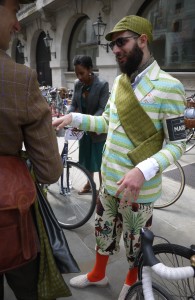
Some folks took some liberty with the event dress code.

A good motto indeed to live by in prewar Britain.
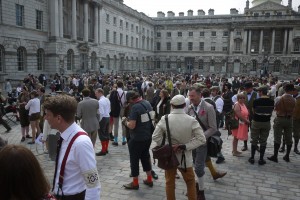
 Panasonic’s new GH4: Digital Cinema Camera By Any Other Name
Panasonic’s new GH4: Digital Cinema Camera By Any Other Name
Any way you hang it or support it the new Panasonic GH4 is an amazing camera, with true Cinema 4K (4096 x 2160) resolution, VFR 2-96 FPS, 10-bit 4:2:2 200 Mbps All-I frame FHD, plus optional 3G-SDI output and balanced XLR audio inputs. Given the hybrid camera’s latest Micro Four Thirds imager, low noise in light, and 11 stops of latitude, the produced images look a lot like what one might see in a digital cinema. The camera doesn’t feel or operate like a true digital cinema camera however. And therein lies the rub.
Cameras cannot be judged by raw performance or specifications alone. We still have to be able to handle the camera efficiently under a wide range of conditions and keep it in focus. Operational considerations matter!
Here is a link to my current review of the camera in Studio Daily Magazine:
http://www.studiodaily.com/2014/04/review-panasonic-ag-gh4u-mirrorless-4k-camera/
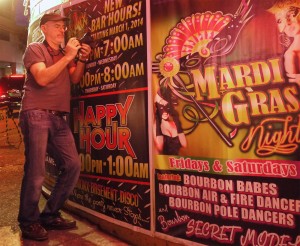
Shooting with the new Panasonic GH4. Barry Braverman seeks moral and physical support in Makati City Philippines 19 March 2014
 Among the Flamingos at NAB 2014
Among the Flamingos at NAB 2014
Just wrapped NAB 2014 in Vegas. Really great seeing many old and new friends in one place! Panasonic’s new Varicams are sweet and I was pleased to have had the opportunity to present them to the public. I even had two guys in my audience who laughed at my jokes! I was thinking it was cool. So what if they didn’t speak English.
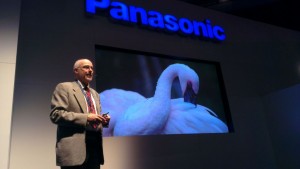
Barry Braverman presents the new Varicams among the flamingos at NAB 2014 in Las Vegas.
 Aspiring Shooters in the Philippines
Aspiring Shooters in the Philippines
I continue to be amazed and humbled by the young shooters I encounter around the world, and this is especially the case in Asia where I have been conducting camera and lighting workshops, including last week in Manila and Makati City. I was especially impressed by the enthusiasm of the young shooters at television station GMA7 under the tutelage of Virgilio Muzones, a true mentor and friend to hundreds of young aspiring craftsmen. My followup public workshop in Makati attracted 300 aspiring filmmakers, from first-year university students to newly minted pros eager to enhance their visual storytelling prowess. I can’t wait to see what the young people do next with their newfound skills! For sure great things are in store for the young shooters of the Philippines!
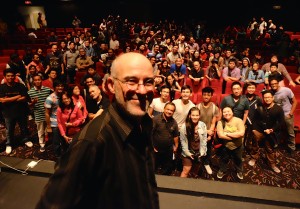
20 March 2014.
Three hundred eager young shooters and filmmakers attended my public workshop in Makati City Philippines.
 The Truth About Crop Factors
The Truth About Crop Factors
A reader wrote me recently regarding an online merchant’s ad touting the benefits of a 50mm DSLR lens on a smaller format camera. The ad claimed that due to the 2X crop factor in a Micro Four-Thirds camera like the Panasonic GH3 the 50mm lens could serve as the functional equivalent of a moderate telephoto, a popular choice for portrait photographers. At first the reader accepted the ‘equivalency’ assertion, but now he is no longer sure. Since the narrow angle of view is due to the smaller imaging target rather than magnification, can a 50mm lens ever be functionally or aesthetically equivalent to an 85mm or 105mm?
A 50mm lens is still a 50mm lens regardless of the camera’s target or sensor size. While it’s true that the 2x crop factor reduces the viewing angle and field of view the foreshortening of perspective one expects from a moderate telephoto is not present. This contributes to an unnatural cropped look; this look characterized by the increased depth of field of the 50mm focal length compared to an 85mm or 105mm.
The same logic should occur to camera folks touting the virtues of 4K image capture which they say makes possible significant cropping to HD 1920 x 1080 inside the 4096 pixel frame. The cropping may indeed constrain the field of view but the unnatural perspective inside the cropped frame may appear be potentially disturbing to audiences.
SLR portrait lenses 85mm – 105mm are effective because they help preserve a normal i.e. realistic roundness in the face of subjects when shooting at normal distances of six to eight feet (1.5m – 2.5m). A 50mm lens at only a few feet from the subject may produce too much roundness and thus produce a look like an ogre. Maybe this is what you want. Maybe it isn’t.
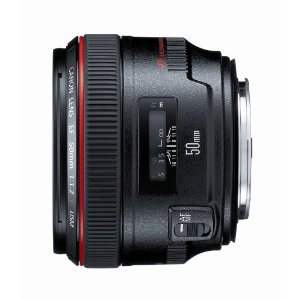
Given a 2X crop factor this 50mm can never be the functional equivalent of a moderate telephoto portrait lens.
 VIDEO SHOOTER 3rd Edition Now Available!
VIDEO SHOOTER 3rd Edition Now Available!
It’s finally here! With lots of new and updated material, including discussion questions for educators and in-depth chapters on the DSLR and 3D shooting and storytelling.
http://www.amazon.com/Video-Shooter-Mastering-Storytelling-Techniques/dp/0240825179/ref=sr_1_1?s=books&ie=UTF8&qid=1386742775&sr=1-1&keywords=video+shooter
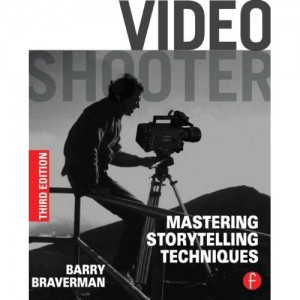
 Hunger in Asia
Hunger in Asia
My November workshops in Malaysia and the Philippines have again confirmed at least in my mind the intense hunger for education and training in that part of the world. Notwithstanding my few days in the typhoon-devastated areas outside Cebu where the hunger of people is more much literal, my workshops in Kuala Lumpur and Manila were oversubscribed by hundreds of eager participants in each city. In Malaysia those attending were mostly news cameramen looking to expand their visual storytelling skills and career opportunities at their respective stations.
In Manila the Fast Forward event at the city’s immense convention center attracted nearly 350 attendees comprised mostly of independent filmmakers and producers. More workshops in Asia are in the works for early next year! Stay tuned!

Some workshop attendees came dressed as an anime character. Go figure.
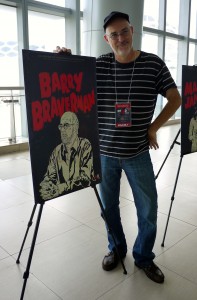
The Philippines is my 29th country since 2006 to host my camera storytelling workshop.
 Sony FS700RH: Economical 4K But We Need the Optics To Go With It
Sony FS700RH: Economical 4K But We Need the Optics To Go With It
It goes without saying the FS700 performs very well. At 4K its images have a pleasing organic look that can be honed or tweaked during grading and finishing almost without limitation. In pro-level cameras the SDI output is typically 10-bit but in RAW mode the FS700 outputs a 12-bit proprietary signal via 3G-SDI. Sony has thus far not permitted third parties like Convergent Design to capture the 4K RAW data. For this shooters must use Sony’s 4K recorder and interface – the AXS-R5 coupled to the HXR-IFR5.
Aside from the storage and associated workflow issues the real drawback to 4K image capture is the need for high-quality optics; satisfactorily capturing high resolution images in 4K demands the highest performance (i.e. expensive) lenses we can find to offset the increased visibility of once well-concealed optical defects.
Recently I had the opportunity to shoot with the updated FS700 for SPACE COWGIRLS, a new web series written by Allyson Adams and directed by Adele Slaughter. The vintage Canon FD series lenses available offered a nice range of focal lengths from 20mm to 135mm with decent functionality. Still I couldn’t help but notice at 4K resolution their less than stellar performance: reduced contrast, increased flare, curvature of field, and many visible chromatic aberrations, The FS700 recording in 4K may indeed be the most economical solution around, but let us recall that 4K capture doesn’t in and of itself produce 4K images; we still need the appropriate optics to go with it.
